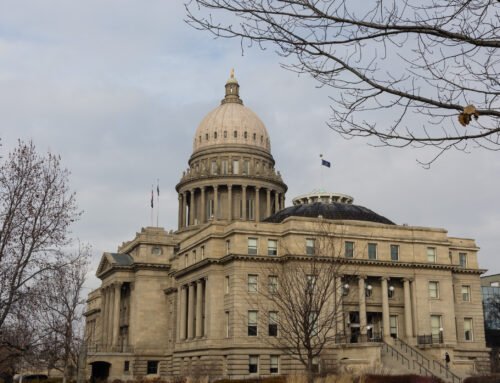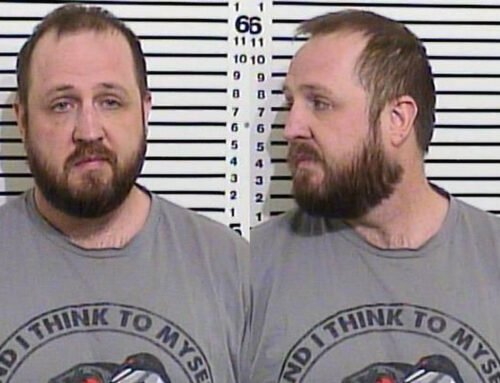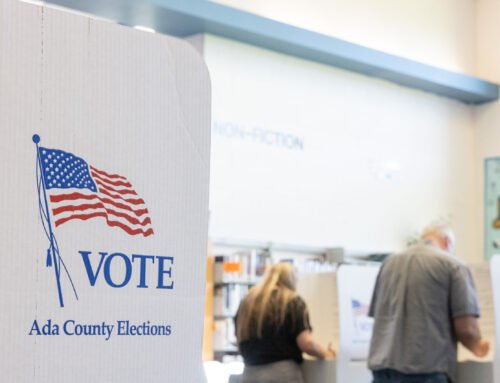The state collects plenty of data about what students do after high school.
And on Thursday, State Board of Education members chewed on some conflicting numbers.
On the one hand, board members heard more details about the state’s chronically low college go-on rate — a problem that only got worse during the pandemic.
On the other hand, board members also heard encouraging data about the demand for college scholarships — a sign that students are more interested in going on.
Here’s a look at what the board learned on Thursday, in a pair of back-to-back, data-heavy presentations.
The go-on rates
No surprise here, and a trend we’ve written about before: More than half of Idaho’s high school graduates are doing something other than going straight to college.
In 2022, only 42% of high school graduates went to college in the fall, continuing a sharp COVID-19-era decline.
But only five years earlier, the go-on rate had reached 51%. The dropoffs began before the pandemic, State Board senior research analyst Briana Krebs said.
That’s what troubled several board members Thursday.
“We just can’t blame everything on COVID,” board member Cally Roach said.
Krebs’ presentation focused on one demographic factor, a chronic problem that we’ve also written about before: Young men are less likely to go to college.
In 2021, 36% of male high school graduates went straight to college, compared to 52% of female graduates.
The conventional wisdom is that this is tied to the economy — young men are more likely to try their hand in the workplace after high school, especially when high-paying jobs are plentiful. But the data says high-performing male students are most likely to put off college, at least right away, Krebs told the board. Many of these young men eventually enroll in college, and the gender gap narrows, but it never completely vanishes.
The college gender gap is not unique to Idaho, but State Board member Kurt Liebich called it the biggest diversity issue facing the state’s higher ed system.
A few minutes later, Liebich doubled down — after warning that he was about to say something that might be politically incorrect.
“My personal opinion is the days of Title IX have passed us by,” said Liebich, adding that relaxing some restrictions on male collegiate athletics would help get some more young men onto campuses.
Title IX, a landmark gender equity law, is federal statute. Its fate is outside the State Board’s bailiwick.
The Opportunity Scholarship
OK, here’s a question that falls under the State Board’s purview.
What’s the best way to divvy up the $20 million-a-year Opportunity Scholarship program, Idaho’s signature financial aid offering?
The state has long had more qualified scholarship applicants than it has scholarship money. About 1,000 eligible students are on a waitlist, said Cate Collins, the State Board’s principal research analyst.
The scholarship kept up with demand during the pandemic, when college enrollment dropped. But now, the state has one of those quintessential good problems to have. Idaho received 7,445 new applications for Opportunity Scholarships this past year, a 30% increase.
That’s exciting news, Collins told board members. It’s also a stark contrast to the state’s perennially dismal go-on numbers.
So here’s the question: Does the State Board want to change the guidelines for the scholarship? Does the board put money into more students’ hands? Or does the board increase the maximum scholarship award for the first time since 2017, to try to keep up with rising costs?
The board has a little bit of money to move around. Community college-bound students will now get aid through the new Idaho Launch grant program, and will no longer be eligible for the Opportunity Scholarship. As a result, Collins said, nearly 750 Opportunity Scholarships will fall off the books.
Contemplating the board’s options, State Board member William Gilbert directly addressed University of Idaho President C. Scott Green, who was watching the meeting from the audience.
“I think we’ve got to follow you guys on that one.”
A State Board decision will come in April.
Putting it together
It is not news that many high school graduates aren’t going on. They’re taking time off to work, serve a church mission or serve in the military. Some eventually go to college. Others don’t.
It also makes sense that more of Idaho’s college-bound students need financial aid and want a state scholarship.
Both things can be true at the same time. And both things almost certainly are true.
Addressing both factors — and any number of other variables — is why policymaking is difficult.
Kevin Richert writes a weekly analysis on education policy and education politics. Look for his stories each Thursday.






Leave A Comment